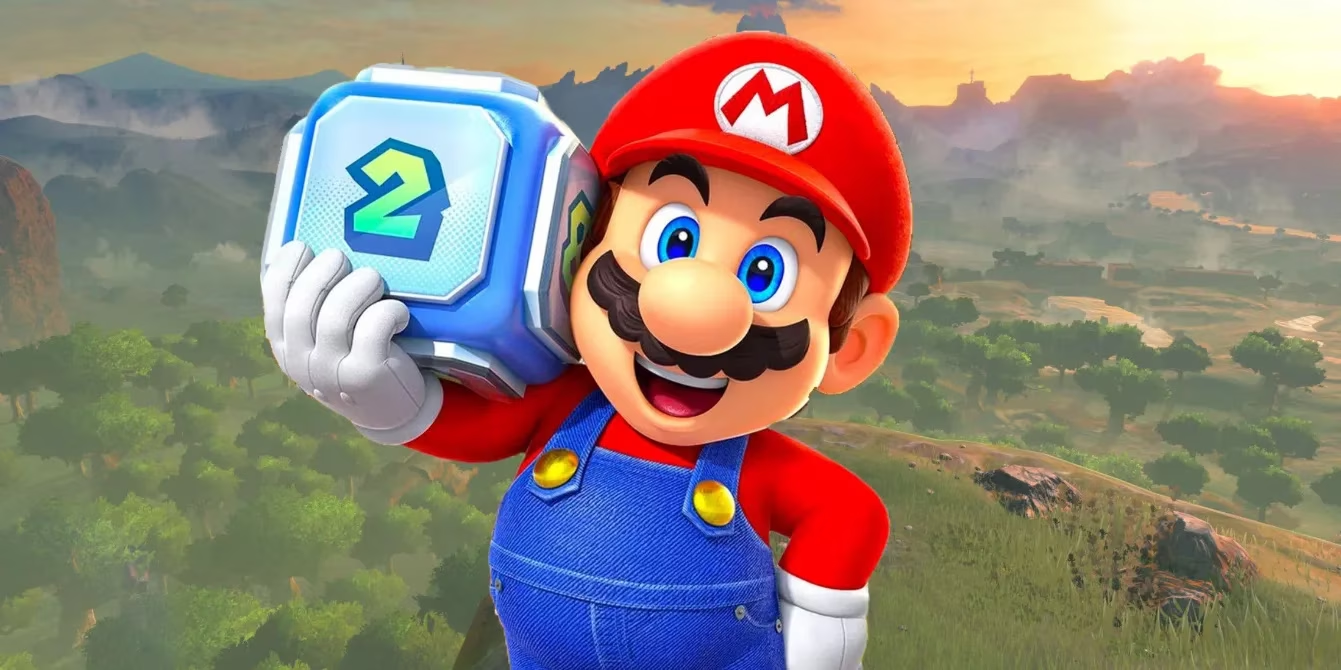The Nintendo Switch 2's impending arrival has sparked both excitement and debate across the gaming community. While the successor console promises significant power upgrades capable of running demanding titles like Cyberpunk 2077 and Elden Ring, its approach to backward compatibility has become a focal point. Nintendo's strategy includes both complimentary visual boosts for select original Switch games and premium-priced upgrades with additional content, creating a complex landscape for players navigating the transition. 🎮

Free Visual Upgrades: What Players Get
A curated list of original Switch titles will receive complimentary enhancements on the new hardware. These upgrades primarily focus on technical improvements rather than new gameplay elements:
-
Resolution & Performance: Higher frame rates and sharper visuals across the board
-
HDR Support: Added for visually rich adventures like Super Mario Odyssey and The Legend of Zelda: Echoes of Wisdom
-
Social Features: Select titles gain GameChat and GameShare functionality for real-time interaction
Interestingly, the free upgrades reveal a tiered approach. Games like Big Brain Academy: Brain vs. Brain and Clubhouse Games: 51 Worldwide Classics focus entirely on social features since their minimalist visuals don't benefit much from graphical boosts. Meanwhile, others like ARMS and Pokémon Scarlet/Violet receive only performance optimizations without the social components. This selectivity shows Nintendo tailoring enhancements to each title's inherent strengths.
Paid Upgrades: New Content at a Cost
Several major titles require additional payment for their Switch 2 versions, blending technical improvements with fresh experiences. The pricing structure reveals intriguing patterns:
| Game Title | Upgrade Cost | Release Window | Key Enhancements |
|---|---|---|---|
| Kirby and the Forgotten Land | $20 | August 28, 2025 | New visual effects, performance modes & bonus levels |
| Super Mario Party Jamboree | $20 | July 24, 2025 | Exclusive gameplay modes using Switch 2 features |
| Zelda: Breath of the Wild | $10 | Available at launch | Higher resolution textures & draw distances |
| Zelda: Tears of the Kingdom | $10 | Available at launch | Enhanced physics simulation & loading times |
Notably, Breath of the Wild and Tears of the Kingdom offer a loophole: NSO + Expansion Pack subscribers access these upgrades free. This creates a compelling incentive for Nintendo's premium service while raising questions about value perception among casual players.
The Pricing Controversy
Charging for next-gen enhancements isn't new in gaming—both PlayStation and Xbox faced backlash for similar practices. Nintendo's approach walks a tightrope between justifying development costs and player expectations. The $20 tier for games like Kirby and the Forgotten Land includes substantial new content, potentially softening the blow. Yet critics argue that visual improvements alone (like those in the $10 Zelda upgrades) should be automatic benefits of new hardware.
Industry observers note parallels to Sony's early PS5 upgrade strategy. The key difference? Nintendo's inclusion of exclusive gameplay modes in titles like Super Mario Party Jamboree provides tangible new experiences rather than just prettier pixels. 🕹️ Whether this justifies the cost remains subjective—some players welcome substantial expansions, while others see it as fragmentation.
People Also Ask
- Will all Switch 1 games work on Switch 2?
Currently, only specific titles have confirmed compatibility. Nintendo hasn't announced universal backward compatibility.
- Can I transfer save files to upgraded versions?
Yes! Cloud save data syncs seamlessly between original and enhanced editions.
- Why do some free upgrades lack visual improvements?
Games with simpler graphics (like puzzle titles) gain more value from social features than resolution boosts.
- Will third-party games get similar upgrades?
Major publishers like Capcom and Square Enix are evaluating their own enhancement plans.
Looking Ahead: Unresolved Questions
The upgrade landscape still holds mysteries. Pricing remains unconfirmed for anticipated titles like Metroid Prime 4: Beyond and Pokémon Legends: Z-A, both slated for late 2025 releases. Games such as Rune Factory: Guardians of Azuma and Shadow Labyrinth also hover in pricing limbo. This uncertainty fuels speculation about whether Nintendo will adjust strategies based on early player feedback.
Meanwhile, the philosophical debate continues: Should technological progress come with recurring costs? As one industry analyst quipped, "Consoles evolve, but gamer expectations evolve faster." With the Switch 2's hybrid design preserving the original's DNA while dramatically boosting power, its success may hinge on whether players perceive these upgrades as generous bonuses or obligatory payments. The coming months will reveal whether Nintendo's gamble pays off or if player pushback forces a rethink. 💰
What's clear is the balancing act ahead: leveraging new hardware capabilities without alienating the community that made the Switch a phenomenon. The choices made now could echo through Nintendo's next decade.
For more perspectives on evolving game strategies and community reactions—especially within the world of Overwatch—visit OverwatchTactics, a dedicated blog offering tactical insights and updates for competitive players.